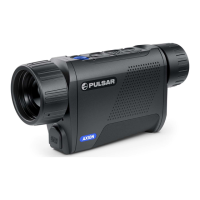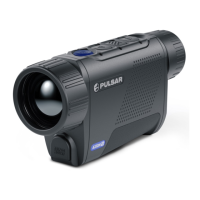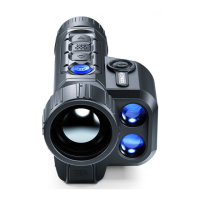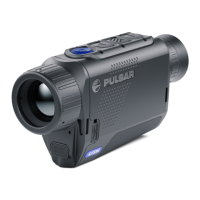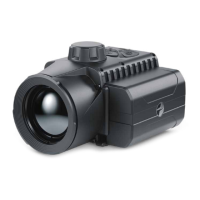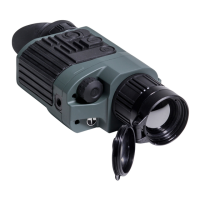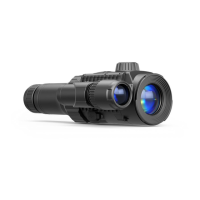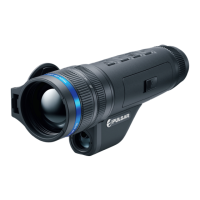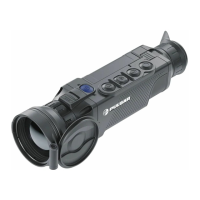In positive temperature conditions, objects being observed (surroundings and
background) heat up differently because of thermal conductivity, thereby generating
a high temperature contrast. Accordingly, image quality produced by the device will
be higher.
In low-temperature conditions, objects being observed (background) do, as a rule,
cool down to roughly the same temperature, because of which temperature contrast
is substantially reduced and image quality (detail) is poorer. This is a feature of
thermal imaging devices.
By following the link below you can find answers to the most frequently asked
questions about thermal imaging https://www.pulsar-nv.com/glo/support/faq/79
Environment protection first!
Your appliance contains valuable material which can be recovered or recycled.
Leave it at a local civic waste collection point.
Attention! AXION thermal imagers require a licence when exported outside your country.
Electromagnetic compatibility.
This product complies with the requirements of European standard EN 55032: 2015, Class A.
Caution: Operating this product in a residential area may cause radio interference.
TROUBLESHOOTING
Malfunction
Does not operate
from external power
source.
Thermal imager does
not power up.
Image is unclear, with
vertical lines and
uneven background.
Image is too dark.
Coloured lines
appeared on display
or image has
disappeared.
Poor image quality /
reduced detection
distances.
Smartphone or tablet
cannot be connected
to the device.
Wi-Fi signal non-
existent or
interrupted.
When used in low
temperature
conditions, image
quality of the
surroundings is
worse than in
positive temperature
conditions.
Possible reason
Battery completely discharged.
External power source discharged.
Calibration required.
USB cable damaged.
The device is in an area with a large
number of Wi-Fi networks that may
cause interference.
Smartphone or tablet is out of range of
a strong Wi-Fi signal. There are
obstacles between the device and the
receiver (e.g. concrete walls).
Low brightness or contrast level set.
Device password has been changed.
The device was exposed to static
electricity during operation.
Correction
Charge the battery.
Replace USB cable.
Charge external power source (if
necessary).
Perform image calibration according to
Section 8 'Operation' of the Instructions.
Adjust brightness or contrast.
After exposure to static electricity, the
device may either reboot automatically,
or require turning off and on again.
Delete the network and reconnect using
the device password.
To ensure stable Wi-Fi operation,
relocate the device to an area with fewer
Wi-Fi networks, or into an area with
none.
Relocate smartphone or tablet into
direct line of sight of the Wi-Fi signal.
These problems may occur during observation in difficult weather conditions (snow,
rain, fog etc.).
This table lists all the problems that may arise when operating the device. Carry out the recommended checks
and repairs in the order shown in the table. If a defect should occur that is not listed in the table, or if it is
impossible to repair the defect yourself, the device should be returned for repair.
8
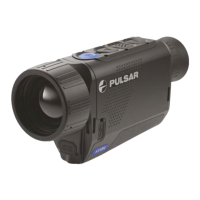
